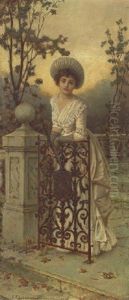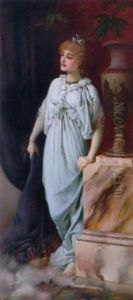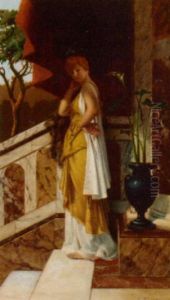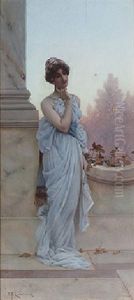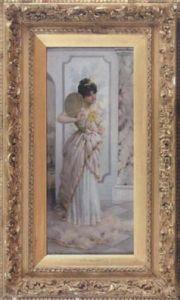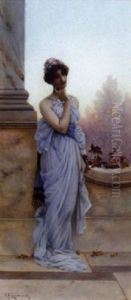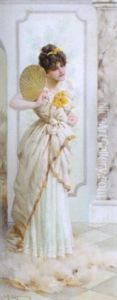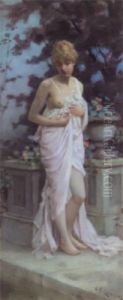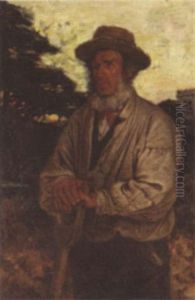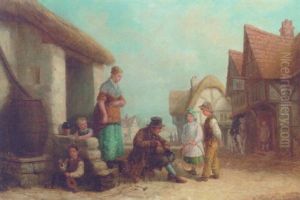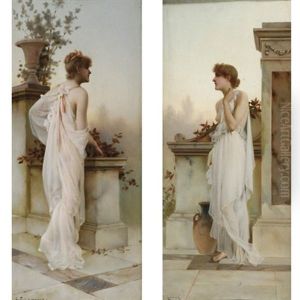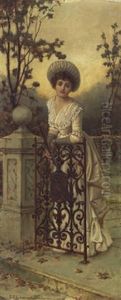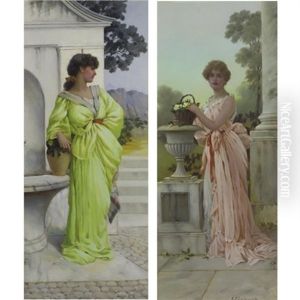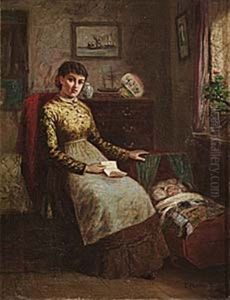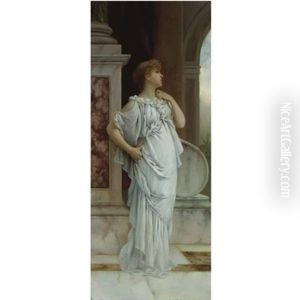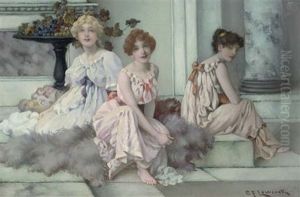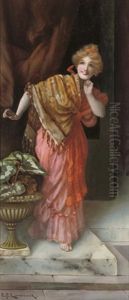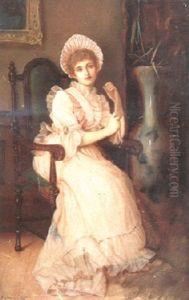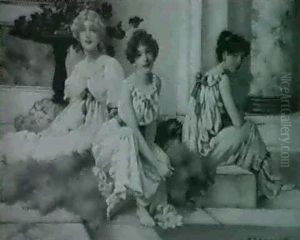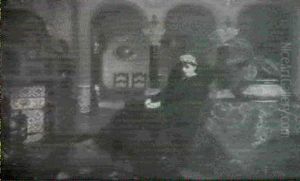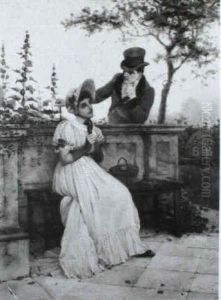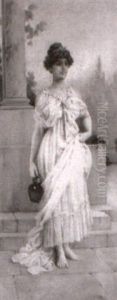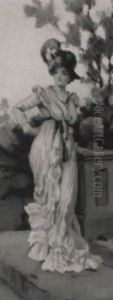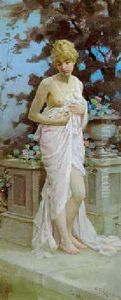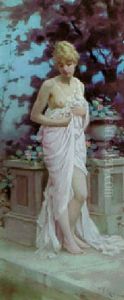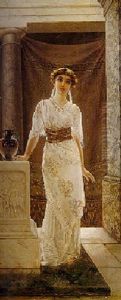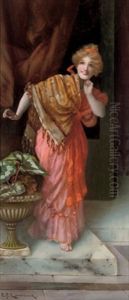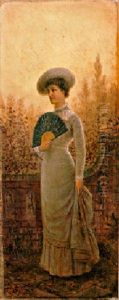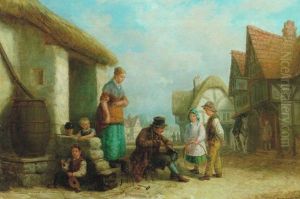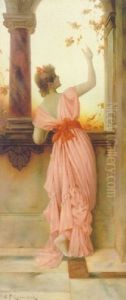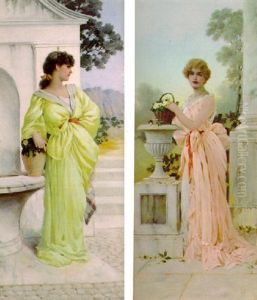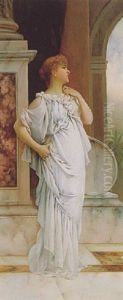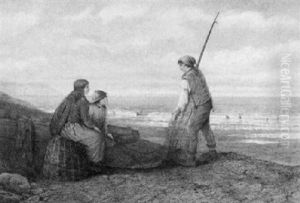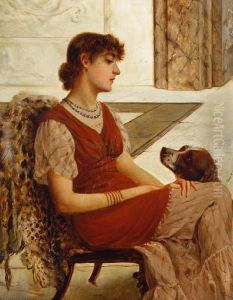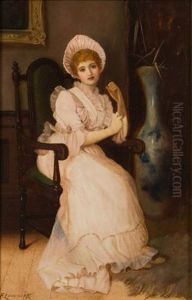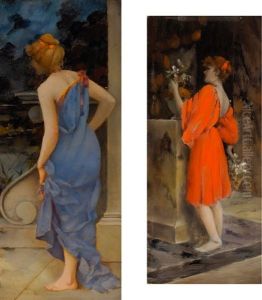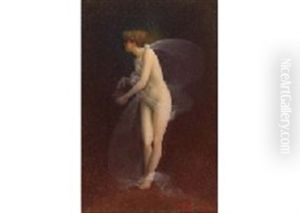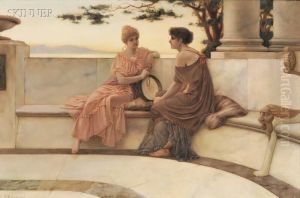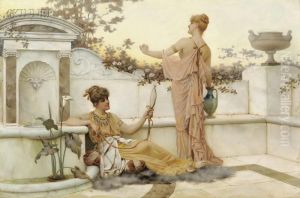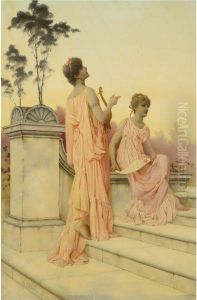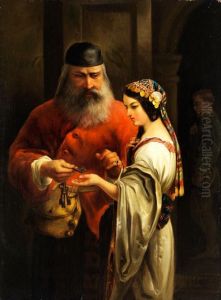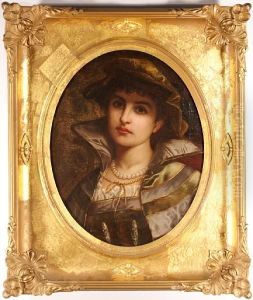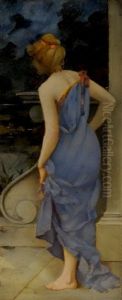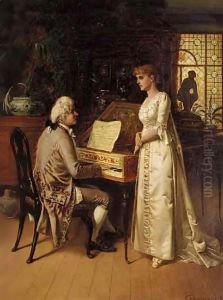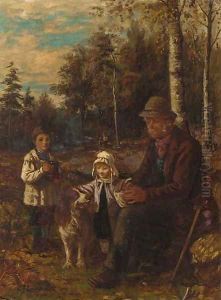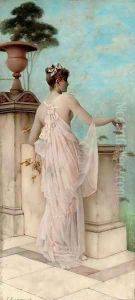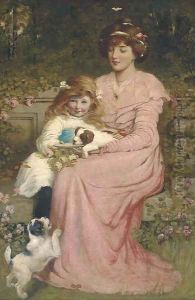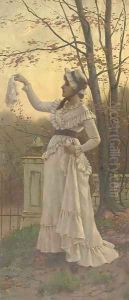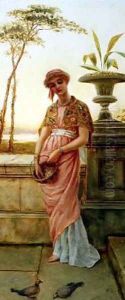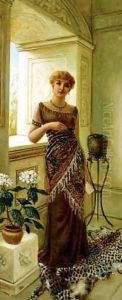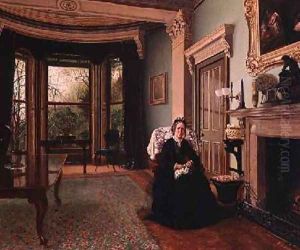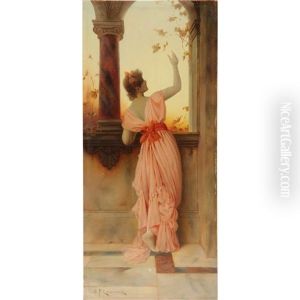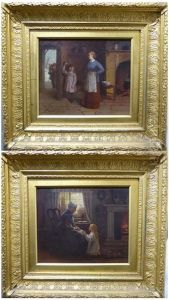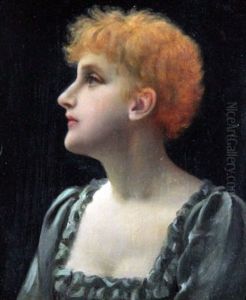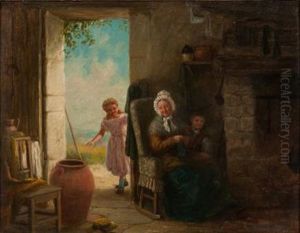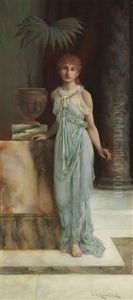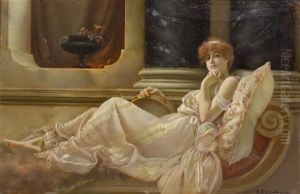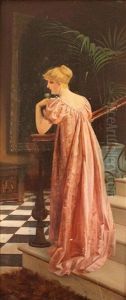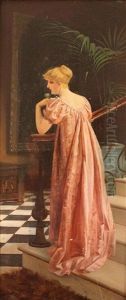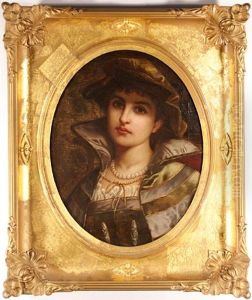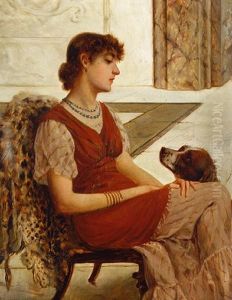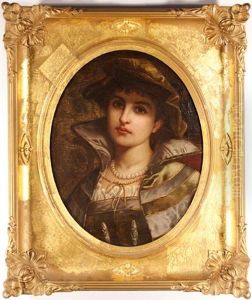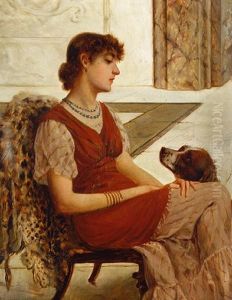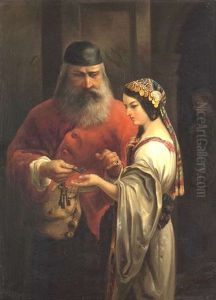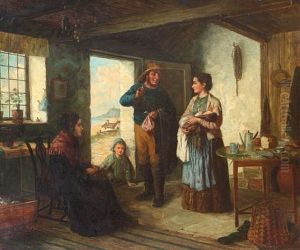Charles Frederick Lowcock Paintings
Charles Frederick Lowcock was a British artist and educator known for his contributions to the arts during the late 19th and early 20th centuries. Born in 1861, Lowcock's career spanned a period of significant transformation in the British art world, reflecting the broader cultural shifts of his time. He was not only a painter but also an influential figure in art education, dedicating a large part of his life to teaching and inspiring the next generation of artists.
Lowcock's artistic style was deeply influenced by the movements of his time, particularly by the Pre-Raphaelite Brotherhood, which emphasized a return to the detailed, complex compositions and vivid colors of Quattrocento Italian art. Although not a member of the Brotherhood himself, the influence of their ideals and aesthetic values can be seen in his works, which often featured historical and mythological themes, executed with meticulous attention to detail and a vibrant palette.
Throughout his career, Lowcock was involved in various art institutions, contributing to the development and reform of art education in Britain. He was a part of the Manchester School of Art, where he played a significant role in shaping the curriculum and teaching methods. His approach to art education was holistic, emphasizing the importance of both technical skill and creative expression. Lowcock believed in the value of studying the masters of the past as a foundation for contemporary artistic practice, a principle that guided his teaching philosophy.
In addition to his contributions to education, Lowcock was an active participant in the art community, exhibiting his works at various galleries and competitions. His paintings were well-received, earning him recognition and accolades within the art world. Despite this, Lowcock remained committed to his educational work, viewing it as his primary contribution to the field of art.
Charles Frederick Lowcock's legacy is that of a dedicated educator and a skilled artist who bridged the gap between traditional and modern art practices. His work and teachings left an indelible mark on the generations of artists who followed, contributing to the ongoing evolution of the British art scene. He passed away in 1942, leaving behind a body of work that continues to be studied and admired for its beauty and historical significance.
